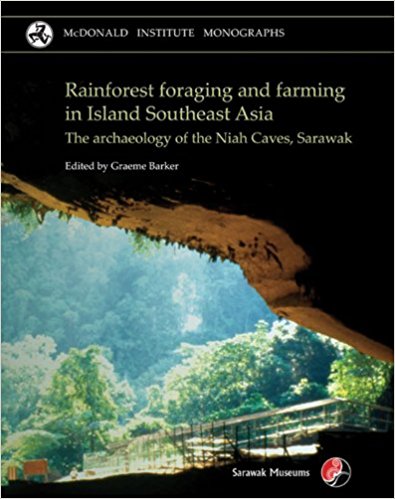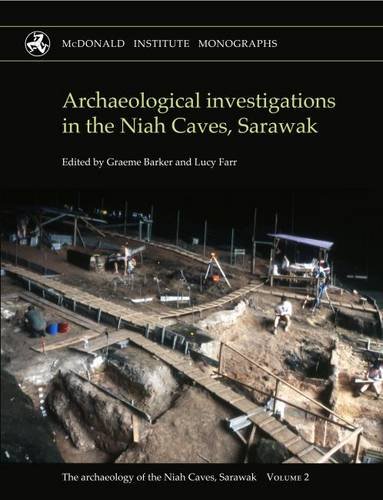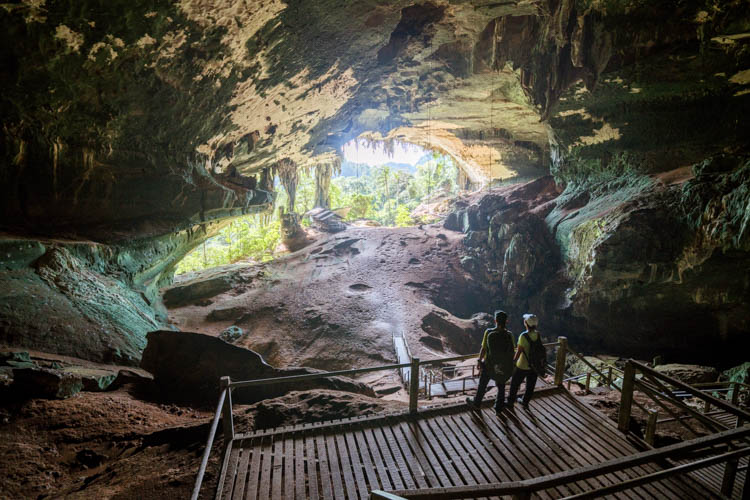Professor Graeme Barker wins Field Discovery Award for archaeological research
Published on 15/01/2018


Professor Graeme Barker, a Fellow of St John’s College, has received international recognition for his work on the ways in which people have shaped the rainforests of Island Southeast Asia through human history.
In an award ceremony at the Shanghai Archaeology Forum last December, Prof Barker received a prestigious Field Discovery Award for his research.
The Field Discovery awards are presented annually by the Shanghai Archaeology Forum, and organised by the Institute of Archaeology at the Chinese Academy of Social Sciences. They recognise “archaeological surveys and excavations that have yielded major discoveries significantly furthering or even altering our knowledge of the human past.” Professor Barker’s project was one of 10 winners, chosen from over 130 nominations.
The award was focussed in particular on his work in the Niah Caves in Sarawak (East Malaysia) on the island of Borneo. These caves are extremely well known by archaeologists as a result of the excavations made in the 1950s and 1960s by Tom and Barbara Harrisson. Their most important find, in 1958, was the skull (the ‘Deep Skull’) of an anatomically modern human (Homo sapiens) that they thought might be 40,000 years old, in 1958 the oldest modern human fossil in the world. They found evidence that the caves had been used from then until recent centuries, making them potentially the best ‘archaeological history’ in the entire region, but doubts were often expressed about some aspects of the reliability of their findings.
Since 2000 Professor Barker has coordinated new excavations in the caves and supporting laboratory analyses by a large international and multi-disciplinary team of over 70 scientists, the results of which have been published as two major monographs bringing all the results together - ‘Rainforest Foraging and Farming in Island Southeast Asia’ (2013) and ‘Archaeological Investigations in the Niah Caves, Sarawak’ (2016).
Commenting on the award, Professor Barker paid tribute to the research team which undertook the studies. “This is a lovely accolade for all of us and I am really delighted for all the support the Sarawak Museum gave to the project in general and to me in particular as its director,” he said. “I do hope it all helps to celebrate the globally-important archaeology of the Niah Caves, for which a strong case can now be made that it should be recognised by UNESCO as a World Heritage Site.”

The team have dated the Deep Skull accurately to around 37,000 years ago, using modern radiometric techniques not available to the Harrissons, and shown that modern humans were visiting the cave from at least 50,000 years ago. They found evidence that these early modern humans had developed innovative techniques for living in the rainforest as hunters and gatherers: developing complex hunting technologies of stone, bone, shell and wood; techniques to make toxic plant foods safe to eat (similar techniques are used by Australian aborigines today); ways of managing plants (‘vegeculture’) in ways that presage farming thousands of years before true farming began; and clearing and burning patches in the forest to aid the growth of these plants.
The eventual shift from foraging to farming 5000 years ago was not purely about diet, but also represented important transformations in the region-dwellers’ social lives and forest cosmologies. The new excavations have confirmed the Niah Caves as one of the most important archaeological sites in the world for documenting the novel behaviours and adaptations that modern humans had to develop to cope with unfamiliar environments during their dispersals across the globe from Africa, at a time of massive climate change. They provide the deepest history yet available anywhere in the world for the impact that humans have had on rainforest since they first encountered them. World Archaeology described these findings as “unsurpassed worldwide in the context of reconstructing…human rainforest subsistence foraging strategies”.
Professor Barker is currently continuing his research on the region of Sarawak, as well as investigating the Pleistocene and Holocene settlement of North Africa and Iraqi Kurdistan, pursuing his interests in the behaviours developed by early modern humans that made them so successful, enabling them to outcompete other species such as Neanderthals and colonising more or less the entire globe by the beginning of the modern climatic era 10,000 years ago. He is also a Senior Fellow at the McDonald Institute for Archaeological research and the Director of Studies of Archaeology at St John’s College.
To find out more about studying Archaeology at St John’s, please click here